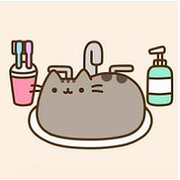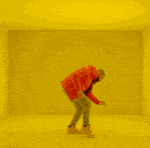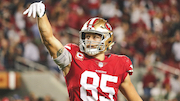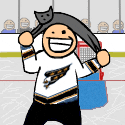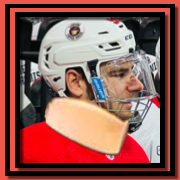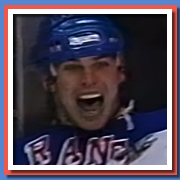|
xzzy posted:I looked up the address, and man, I will never have a reason to be out that way. How big is the store? Maybe when I get to the gear buying stage I'll try them out, if they're newbie friendly. It's not a huge store, not like Gunzo's at least, but they have all the basics (although for whatever reason, they don't stock CCM skates). Stick selection is very good though, and most importantly the staff actually knows what they're doing. For whatever reason (shits and giggles?) they stock those ultra-crappy $30 Sher-Wood shin pads. It's fun to feel around the poorly-padded part around where the kneecap goes one those and imagine the cracking sound of your knee cap as it hits the ice. Anyway there's probably no reason for you to venture down this far to this store, if you're closer to either of the reputable Gunzo's locations, unless they have a big sale or something (which you'd have to call to ask about). I will reiterate however that their sharpening jobs are second to none, and relatively quick because they have two machines and two people to run them. The store is also located right down the street from Southwest Ice Arena (in Crestwood), a gritty south side rink and home of the rowdiest Friday-night open skates I've ever been to. When I got all of my crap, I started with the skates (went to the above place, Jerry's), then got a bag at a Gunzo's pro shop. Got my shin, elbow, & shoulder pads, cup, gloves, and pants at the Gunzo's in Morton Grove. A week or so later I went to the one in River Forest and got an undershirt, helmet, mouthguard, two sticks and a water bottle. Went back to Jerry's in Alsip and got skate guards, suspenders, a dark jersey/socks and a few pairs of ultra-thin skate socks. White jersey and socks came from an online retailer selling Slap Shot movie stuff (Charlestown Chiefs!). Altogether I spent a dump truck full of money. Edit: xzzy posted:Skating instructor suggested getting some superfeet last night, I haven't yet researched them. Agreeing with another poster, get these, they're great. I have the yellow ones, you get the ones in your size range and trim them down to size with scissors. bytebark fucked around with this message at 21:30 on Mar 16, 2011 |
|
|
|

|
| # ? Apr 18, 2024 11:06 |
|
Dangerllama posted:But first do the Superfeet thing A good one, perhaps you have a future selling cars! Do you use them in your shoes or your skates? Or both? I'm inclined to get them for my shoes to start with, my day-to-day shoes are pretty flat, but their description of the one intended for ice skates interests me.
|
|
|
|
I've never heard of Superfeet until now. My skates aren't really that uncomfortable. Should I still consider a pair?
|
|
|
|
Henrik Zetterberg posted:I'm 5'9" and I use a 49" stick.  If my measurements are right that comes up to my mid-chest (I'm 6'). I think if I tried to use a stick like that I'd fall over on my face the first time I tried to shoot. xzzy posted:The reason I ask is because my teacher thinks the source of the problems I'm having with my calves/shins (short version: they burn like they're on fire) is I'm relying too much on those muscles to hold my balance. I tense up, and the muscles are fighting each other to keep me upright. It's been getting better as I get more comfortable on the ice and my leg strength improves, but there's still a lot of aches and pains. This sounds about right to me. Specifically, I bet what you are doing is pressing down with your toes as a means of maintaining your balance, this as a result of not getting your knees bent and your back down low enough. Work on getting your posture lower (and bend those knees!), in the meantime try and take some breaks where you wiggle your toes around a bit, this should help the short term soreness. bewbies fucked around with this message at 21:42 on Mar 16, 2011 |
|
|
|
I got them not for arch support or anything, but because the regular inserts were getting sopping wet from sweat, and my foot was sticking to them and pulling them out when I took the skates off. The superfeet inserts are made of a heavier material, are stiffer, and so that solved my problem of the inserts bending up and not staying in the skate. Although it's not why I bought them, I do notice that the overall foot support is better.
|
|
|
|
Henrik Zetterberg posted:I've never heard of Superfeet until now. My skates aren't really that uncomfortable. Should I still consider a pair? Something like 20% of the population have good healthy feet with a solid arch and can go their whole lives without any kind of foot inserts. The rest of us just walk wrong. 
|
|
|
|
bewbies posted:
Sorry, I'm retarded. My shaft is 49". Total length wasn't counting the blade. Oops. edit: VV Henrik Zetterberg fucked around with this message at 22:30 on Mar 16, 2011 |
|
|
|
xzzy posted:A good one, perhaps you have a future selling cars! You put them in your skates. Helps with arch support and volume (I have a high arch and a narrow, low-volume foot). It'll change the feel of your skate (you'll feel like you're taking up twice as much room as before), but that should start to feen natural after a couple of skates. Worst case scenario is that they don't help, but now you have awesome insoles for your skates. Henrik Zetterberg posted:My shaft is 49" How do you walk?
|
|
|
|
bewbies posted:Heads up to anyone on the market for skates: Bauer is preparing to release a new line of Vapor skates, and as a result just about everywhere has cut the price of the current Vapor line by between $100-200 depending on the pair. Great time to pick them up. I will grow a 110 flex if the RX60's go on sale.
|
|
|
|
shooting, people seem to have a lot of questions in general about shooting. I wish I could do my own videos, instead I had to scour youtube.  I want to score goals. How does one do this? By shooting! I think shooting is the most technically demanding part of the game, and it is also one of the more useful skills to have at all levels of play. Being able to take a quick, heavy shot will go a long way to making you a dangerous motherfucker on the ice. Once you develop a heavy shot, you're going to see a lot of pucks going in. This is doubly true at lower levels, where goalies' positioning and reflexes aren't as good: often you really don't have to be terribly accurate (just hit the frame) to have a puck sneak in. Hard shots also create rebounds, which gives you assists, which makes people think you're a team player even if all you're doing is shooting all day long. That said, hockey is hard, and so is shooting. As such, I recommend you practice a lot. Luckily, shooting practice is fun! I'll give you some drills to try out later. Ok I am convinced, I want to be able to shoot well. Now what? There is one basic fact to understand about shooting: shot speed is determined by how fast your stick blade is moving as it releases the puck. In this way it is the same as golf; the only important determining factor is stick velocity. That said, there are a number of useful techniques to generate this velocity. All of them use the stick to store potential energy in the shaft, which is then released as quickly as possible into the puck to propel it forward. We talked about stick flex above, but I'm going to mention it again: the flex of the stick has a significant effect on how much (and how efficiently) potential energy can be stored in the stick. A stick with the appropriate amount of flex will ensure the highest possible energy loading: too stiff and you will not have the strength/technique to preload it enough, too whippy and you'll load it to its maximum level before reaching the limit of your strength/technique. What shots are available to me? First, this depends on who you ask. Everyone throughout the hockey world has different techniques and definitions for shots, so there are all sorts of answers you find out there. Here you will find mine! Anyway, the shot types I teach are:
|
|
|
|
Awesome shooting info, thanks! Makes me feel not as bad for not being able to get my slapshot off the ice after a full year of playing, no matter how much I try at stick time.
|
|
|
|
I think the most important part of any shot is weight transfer. I think like 80% of my shot power comes from my legs. Especially on a slap shot you really have to lean into it. It's going to be hard for a beginner to have a powerful shot until you are totally comfortable on your skates. http://www.youtube.com/watch?v=WY06CZF_MDQ I posted this video in the other thread and it led to a pretty good shooting discussion. I obviously didnt make it to be an instructional video, but especially in some of the slow-mo stuff you can see my hand position on my stick and the weight transfer into the shot, but again take it with a grain of salt I was just messing around on the ice and not every shot (if any of them, to be honest) was properly technical. You can also see how closed my stick blade is on the low shots, and how open (even/especially on the chip shots) my blade is when I'm shooting high. D C fucked around with this message at 00:18 on Mar 17, 2011 |
|
|
|
So if I get up early enough tomorrow I'm going to go to stick and puck and give this a try. https://www.youtube.com/watch?v=Q1Q47-U0OjY Dont mind the messy condo. Going to record at medium quality 720p and 60fps, not sure how the wide angle will look at speed but we'll find out, I'll also do some recordings at 1080p 30fps at high quality, its got a smaller viewing angle, and see how that looks
|
|
|
|
D C posted:So if I get up early enough tomorrow I'm going to go to stick and puck and give this a try. LOL that's awesome. How much did that kit cost?
|
|
|
|
Surfing Turtle posted:LOL that's awesome. How much did that kit cost? Well, the camera itself is $350. There's cheaper options out there, but you get what you pay for.
|
|
|
|
xzzy posted:Well, the camera itself is $350. You can get a GoBro for $179 on Amazon. Lots of guys use this for taking videos of themselves in their steezy ski gear after a massive 3" dump. I hadn't thought of hockey applications. Methinks there will be too much head movement, but I'm looking forward to being proven wrong. waffle enthusiast fucked around with this message at 16:56 on Mar 18, 2011 |
|
|
|
I'll be interested to see how your footage turns out. I got a GoProHD a few weeks ago for some other work, but have stuck it on my hockey helmet a couple times. The camera under exposes because of the ice, but I think the Contour has Exposure Compensation, which is nice. Anyway, here's my clips, occasional cussing so not totally work safe. http://www.youtube.com/watch?v=B4E-IpbSDAw http://www.youtube.com/watch?v=8wR6fnBsEjY I've used the 720p 60fps setting.
|
|
|
|
Dangerllama posted:I hadn't thought of hockey applications. Methinks there will be too much head movement, but I'm looking forward to being proven wrong. It's both awesome and sucky: http://www.youtube.com/watch?v=_xfW-K2PItA http://www.youtube.com/watch?v=oGF2Qt1eD1g He attaches his with a bunch of velcro: http://www.youtube.com/watch?v=osFodR7jPxw
|
|
|
|
MiamiKid posted:I'll be interested to see how your footage turns out. I got a GoProHD a few weeks ago for some other work, but have stuck it on my hockey helmet a couple times. The camera under exposes because of the ice, but I think the Contour has Exposure Compensation, which is nice. Anyway, here's my clips, occasional cussing so not totally work safe. The GoPro looks a lot better than the countour, IMHO. The wide angle and elevated platform make it a bit easier to watch. Maybe it was just the cage in the other one. This was actually pretty good. Image was stable, no camera shake to speak of. My only complaint is the video makes it look like you're dumping the puck around the boards a lot instead of making tape-to-tape passes on defense (OK, I talk poo poo because I'm terrible.) waffle enthusiast fucked around with this message at 18:01 on Mar 18, 2011 |
|
|
|
Dangerllama posted:The GoPro looks a lot better than the countour, IMHO. The wide angle and elevated platform make it a bit easier to watch. Maybe it was just the cage in the other one. This was actually pretty good. Image was stable, no camera shake to speak of. Son of a...haha yeah actually that's something I need to work on. Composure with the puck on the blue line. The footage is just from a weekly pickup game I play in with some guys older than me, no pressure to perform super well, so I need to be a bit more confident with the puck and experiment a bit. I've taken a basic hockey class from our club hockey coaches, and he talks about developing the skill to feel the puck on the blade without having to look at it. You'll notice in the video I've always got my head down checking the puck position before I pass/shoot. Once I get a bit better at keeping my head up, hopefully I can pick some more passes out.
|
|
|
|
bewbies: Great topic on shooting. I basically do not do slapshots ever in a game situation. I never get anything on them and they're always worm burner shots. I've found that the majority of my shooting goals come from snapshots or wristers. Beginners should practice these 2 shots more than any other type because they are effective immediately. Slapshots take time to learn and develop to be an actual weapon, especially if you're a forward. Also important to develop as a forward is the backhander. I do have 1 backhanded goal this season because an idiot on the other team didn't clear the puck on the boards, he thought he could fire it up the middle, right where I was forechecking. Caught the puck on my forehand, brought it to my backhand and got it 5 hole past the goalie. My friend who is a goalie has told me that backhanders are some of the hardest to stop because you can't gauge the release point very well. Keep that in mind. It's also really easy to practice against the boards during a stick and puck session. Also if you're roofing backhanders, the ladies in the sports bar will all flock to you after the game.
|
|
|
|
Played games Sunday through Wednesday. Donated blood yesterday. Went to drop-in at lunch today. Only 8 people showed up so we played 4-on-4 the whole game. Not saying I was hallucinating, but I'm pretty sure at one point I had to stick-handle through three panda bears and a giant shark.
|
|
|
|
I think 75% of my goals I scored this season are backhanders Most of them are on the ice thanks to my pitching wedge Backstrom, but hey whatever works.
|
|
|
|
trilljester posted:My friend who is a goalie has told me that backhanders are some of the hardest to stop because you can't gauge the release point very well. Keep that in mind. This is the absolute truth. Never be afraid to shovel a backhander on net from places where a forehand shot has almost no chance of scoring. Even if the goalie stops it, rebound control is harder if you don't read the shot well right away. It helps that goalies aren't expecting a shot if the player's forehand isn't pointed in an attack position.
|
|
|
|
Of course, to hear your average color commentator describe it, the backhand is as weak as a baby and almost impossible to aim!
|
|
|
|
http://www.youtube.com/watch?v=XuW3yTxZ1HE http://www.youtube.com/watch?v=H0kZGNjdeME http://www.youtube.com/watch?v=xf446vU7fQo The Adams one is one of my favorite goals of all time.
|
|
|
|
xzzy posted:Of course, to hear your average color commentator describe it, the backhand is as weak as a baby and almost impossible to aim! Just for the love of god dont use a backhand to clear the puck out of the defensive zone, it never works. I ended up having to do some work stuff today so I couldnt try my helmet cam at stick and puck, so next week it is.
|
|
|
|
Any advice on trying to learn to stop on ice? Been trying the last few weeks at public skates with not much luck. Got just about everything else down pretty good from playing inline for over a year now
|
|
|
|
dms666 posted:Any advice on trying to learn to stop on ice? Been trying the last few weeks at public skates with not much luck. Got just about everything else down pretty good from playing inline for over a year now Work on snowplowing (heels out, inside edges scraping the ice) and then work on snowplowing while turning to one side with your weight shifting to that foot. Do it slow, you don't want to be suddenly digging your edges into the ice, more scraping with increasing pressure until you stop.
|
|
|
|
MiamiKid posted:I'll be interested to see how your footage turns out. I got a GoProHD a few weeks ago for some other work, but have stuck it on my hockey helmet a couple times. The camera under exposes because of the ice, but I think the Contour has Exposure Compensation, which is nice. Anyway, here's my clips, occasional cussing so not totally work safe. As far as positioning goes, I could see this being very, very helpful. Great videos!
|
|
|
|
Acethomas posted:I'm willing to drive out to either Rinks location for a chance to stick and puck or scrim with a goon, I'll pm you when I get home. Yea feel free, it would be cool to play with a goon. There are a lot of pick up and stick time options and I usually try play at both Rinks in a given week. I also have secrets to share with you if you decide to PM me. wink wink.
|
|
|
|
Anyone have an opinion on helmets regarding concussions? There have been a wave of players who have been wearing the Cascade M11 after coming back from concussions but I've heard skeptics abound regarding their research. Their helmets are designed to be ultra-flexible (you can almost bend them in half with your hands) rather than stiff like most helmets. I've heard opinions where those are only beneficial for big hits from NHL players. It's a relatively new helmet so there isn't really a lot of data, empirical or otherwise. I'm considering that or the Bauer 9900 which is the more traditional helmet. I've had a few hockey related concussions and recently took a very bad one from a hiking accident. Almost any hit to the head causes concussion symptoms for me now so I don't even know if a helmet really is going to make a difference.
|
|
|
|
dms666 posted:Any advice on trying to learn to stop on ice? Been trying the last few weeks at public skates with not much luck. Got just about everything else down pretty good from playing inline for over a year now Get elbow pads, knee pads, and a helmet and just try not to be afraid of looking like an idiot. A good way to kind of get a feel is to practice it on dry land, getting a tiny bit of speed and sort of jumping sideways and landing with your feet together. A lot of the wiping out stuff on ice comes from not lifting the feet up at all at first and just making what amounts to a sharp left or right turn and then putting too much pressure at one end of your feet, thus causing your feet not to dig in but to keep going. So snowplowing, courage, and knowing what the movement is and the balance of weight on your feet from dry land is good.
|
|
|
|
dms666 posted:Any advice on trying to learn to stop on ice? Been trying the last few weeks at public skates with not much luck. Got just about everything else down pretty good from playing inline for over a year now Instructor had me put my hands on the boards with my feet perpendicular to the boards, about arm's length away. Lean on front half of the skate blade, and push one foot forward and away from your body until it hits the boards, using the skate's inside edge. It should make that classic scraping noise and produce a little snow. Get used to the angle needed to make snow and then do it while skating slowly. Get used to that, then ramp up the speed as you get comfortable. When going slow, pay a lot of attention to your edges. If your trailing foot is on the wrong edge or you shift your balance to your heel, you're gonna fall over backwards. Eventually once you start doing it fast enough, you'll feel your rear skate try to swing behind you. This'll start to feel a little bit like a hockey stop, but the technique for a hockey stop is different. Youtube has millions of videos on how to hockey stop properly.
|
|
|
|
I keep bruising the poo poo out of my outside upper thigh by falling on it or banging it into the boards. Is this a problem that getting nicer pants would fix or do I need to learn to fall better or something? I have Vapor X:20 pants which have a hard plastic shell on the thighs with a tiny soft bit of foam underneath.
|
|
|
|
Everybody plays and falls differently. If you happen to repeatedly have this bruise from the way you skate/fall/stop it probably wouldn't hurt to get some pants with more protection in that area. Guys that block shots are going to want better shin pads than guys that don't.
|
|
|
|
dms666 posted:Any advice on trying to learn to stop on ice? Been trying the last few weeks at public skates with not much luck. Got just about everything else down pretty good from playing inline for over a year now Learning how to do a hockey stop is 99.9% a mental thing. I've gotten good at it on my right foot, not so much my left. If you can find a sparsely-crowded open skate (mid-day weekday skates seem to be this way) just go and practice stopping in the corners. Repeatedly. Eventually you'll get it. Also, another poster suggested doing snowplow stops first, and that's good advice. Get good enough at these and suddenly a hockey stop doesn't seem too hard and is easy to transition to.
|
|
|
|
dms666 posted:Any advice on trying to learn to stop on ice? Been trying the last few weeks at public skates with not much luck. Got just about everything else down pretty good from playing inline for over a year now I don't suppose you know how to ski, do you? It's exactly like a parallell stop on skis.
|
|
|
|
Dangerllama posted:I don't suppose you know how to ski, do you? It's exactly like a parallell stop on skis. Which is funny, because I can parallell stop like a champ on skis, but thinking about doing it on ice makes me nervous. I guess it's the hard surface that does it? Worst that happens on skis is you get some snow in your face, and maybe some snickers from your friends as you walk around collecting your gear.
|
|
|
|

|
| # ? Apr 18, 2024 11:06 |
|
Dangerllama posted:I don't suppose you know how to ski, do you? It's exactly like a parallell stop on skis. Just snowboarding, probably gonna try to go to an afternoon skate this week and try out some of the tips you guys gave me.
|
|
|






